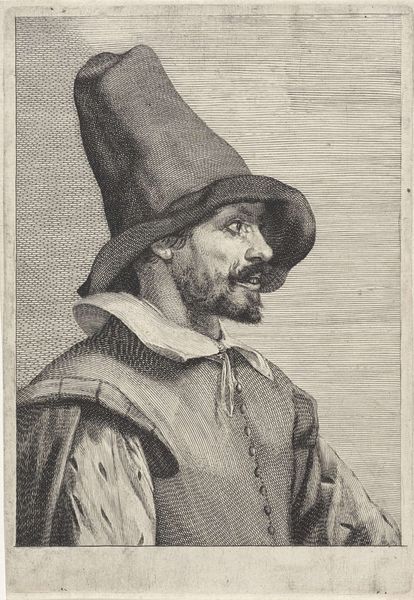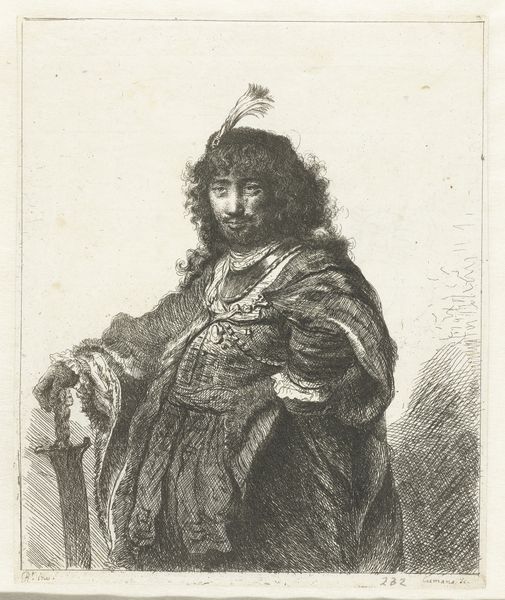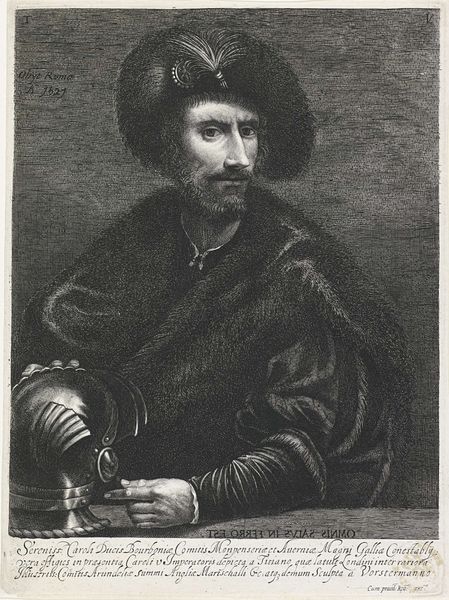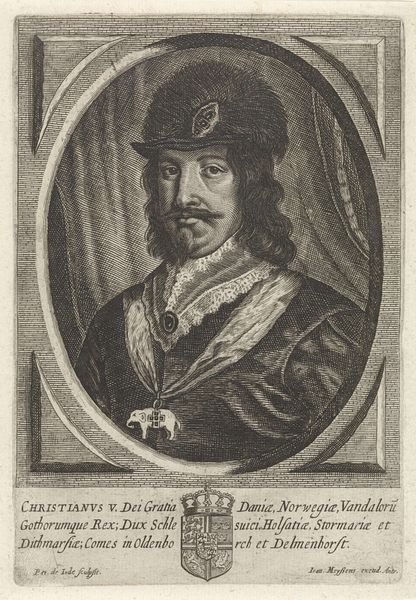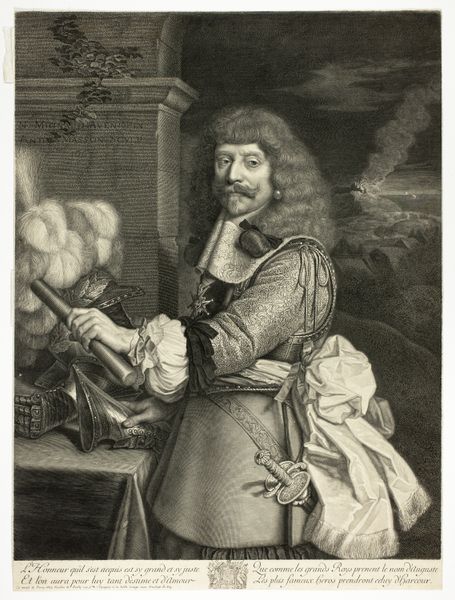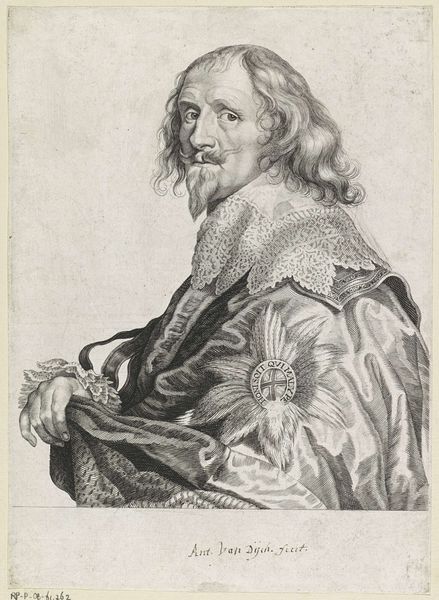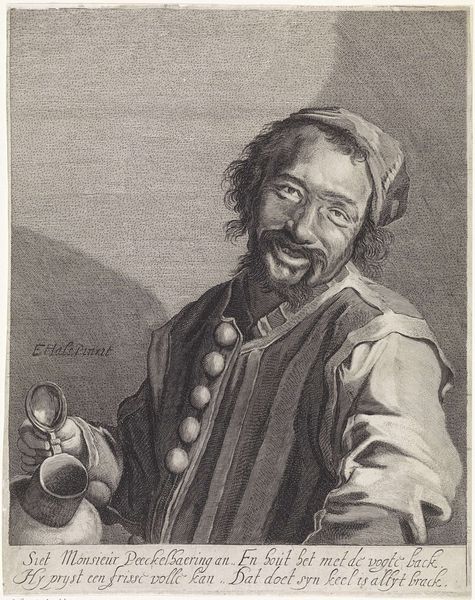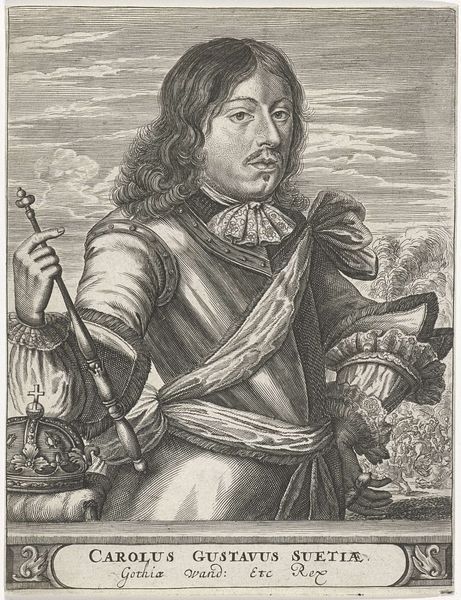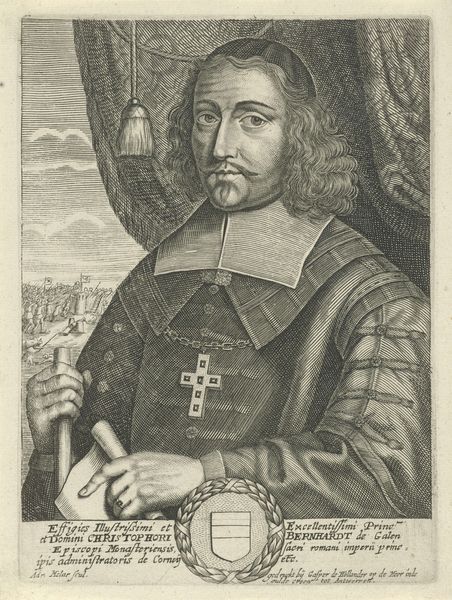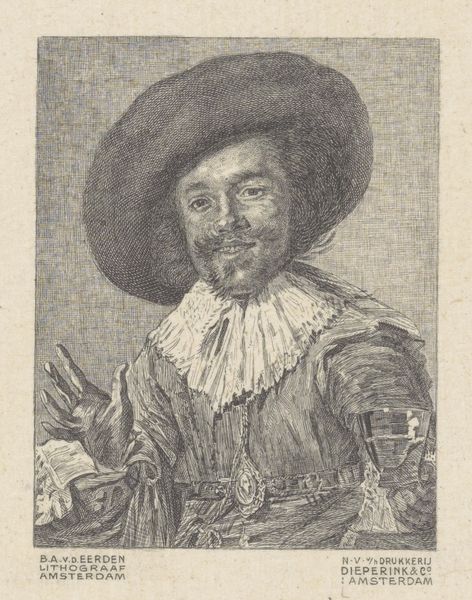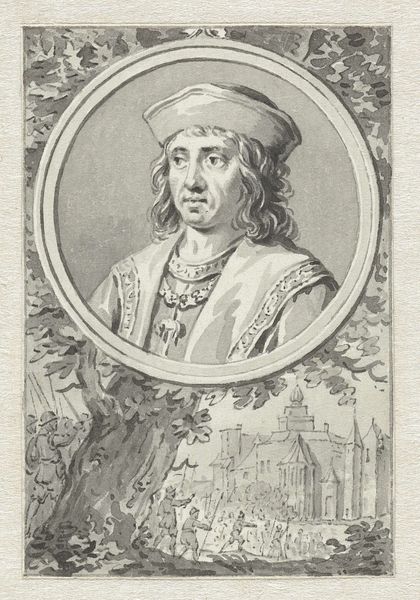
print, glass, engraving
#
portrait
#
baroque
# print
#
old engraving style
#
glass
#
19th century
#
genre-painting
#
engraving
Dimensions: height 194 mm, width 141 mm
Copyright: Rijks Museum: Open Domain
Editor: Here we have Lucas Vorsterman's "Man met een wijnglas (Luxuria)", created between 1651 and 1652. It's an engraving, a print. The level of detail in the face is striking. What can you tell us about the context of such prints? Curator: Well, the material reality of this print reveals so much about 17th-century society. Consider the copperplate: where did the metal come from? Who mined it, and under what conditions? How was it processed? Then the ink – its composition, the labour involved in grinding the pigments…each of these production elements tells a story. Editor: So, it's not just about the image, but also the tangible aspect and the work that went into its creation? Curator: Exactly! This wasn’t simply high art dropping from the sky. The production of prints was a craft, enmeshed in economic realities. Someone had to make the paper, someone had to operate the printing press, distribute them… Consider its availability. Was art becoming more available during this period thanks to these sorts of methods? How would the themes of genre painting be interpreted through these prints by different people? Editor: That gives me a whole new appreciation. I usually think about the artist and their inspiration but ignoring the other factors involved feels almost irresponsible now. It really highlights how art is the sum of all these parts. Curator: Precisely! Seeing art through a material lens connects it to the wider world and forces us to reconsider assumptions about value, authorship, and accessibility. Editor: Thanks, I never thought of it that way. I am curious to see where else this kind of examination can take me. Curator: It will change the way you see everything!
Comments
No comments
Be the first to comment and join the conversation on the ultimate creative platform.

